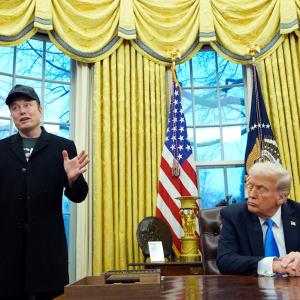In the first month of President Trump’s administration, thousands of federal workers faced job losses. The White House and the Department of Government Efficiency initiated decisions that affected both new and long-term employees. Agencies received instructions to brace for significant budget cuts and a freeze on federal grant funds.
This shake-up extends beyond Washington, D.C., where about 20% of the 2.4 million civilian federal workforce is based. The majority—more than 80%—live elsewhere in the country.
While there are no exact numbers on the total layoffs, reports from various agencies, lawmakers, and employee unions have highlighted the scale of the changes.
One major change was the “deferred resignation” offer. The White House proposed that federal workers could leave their positions by a set deadline in exchange for financial benefits, such as paid leave. However, just before the deadline, a judge intervened, questioning the legality of this initiative.
As of mid-February, around 75,000 federal employees had taken the offer. Layoffs of probationary employees—those typically new on the job and unprotected by civil service rules—also started around this time. Agencies were directed to let go of many of these workers, potentially impacting hundreds of thousands.
For instance, the Department of Veterans Affairs laid off over 1,000 employees, including researchers working on critical health issues like cancer and addiction. Similarly, the Education Department reported at least 39 firings, hitting specialists in special education and student aid.
The layoffs also reached the Energy Department, where hundreds working on nuclear security were initially cut but then swiftly recalled. Meanwhile, the Department of Health and Human Services faced over 5,000 job losses, including about 1,300 at the Centers for Disease Control and Prevention (CDC), which was significant given its critical public health role.
Other agencies were not spared. The Cybersecurity and Infrastructure Security Agency within the Department of Homeland Security cut over 130 staff members, impacting efforts related to election security. The IRS planned to lay off thousands of temporary workers right in the middle of tax season, raising concerns about service disruptions.
Even the National Park Service reported that around 1,000 newly hired employees were let go, although there have since been announcements to reinstate seasonal staff to support the influx of visitors in warmer months.
In addition, the administration paused nearly all federal grants and loans for a wide-ranging ideological review, which could severely disrupt programs in healthcare and education. Critics have labeled this freeze as both unlawful and harmful to work already approved by Congress.
As part of this sweeping change, President Trump also fired many inspectors general—independent watchdogs meant to ensure accountability in government agencies. This led to alarm among various political leaders who viewed these actions as a drastic move against oversight.
Furthermore, the Department of Justice took steps to replace numerous employees involved in high-stakes investigations related to Trump himself, which is unusual and raised further eyebrows regarding the administration’s priorities.
All these actions reflect a significant transformation within the federal workforce under President Trump, marking a pivotal time for both employees and the broader landscape of government operations.
For ongoing updates and further insights into government changes, feel free to reach out.
Source link
Donald Trump, White House, Department of Government Efficiency, probationary employees, federal grant funds, Education Department, federal employees, Department of Veterans Affairs, federal agencies, Federal Emergency Management Agency, Department of Homeland Security, National Park Service










